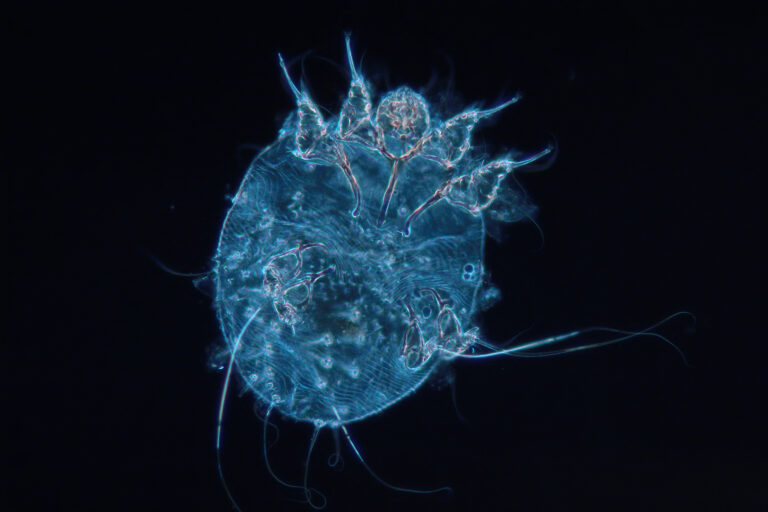Sarcoptes scabiei

Mammals
It is now believed that all species of Sarcoptes in animals are races of the same species (Sarcoptes scabiei var. canis). The causative agent of scabies in humans, like all members of the superfamily Sarcoptoidea, lives not on but in the skin (from the Greek word “sarx” meaning flesh). The family Sarcoptoidea occurs in birds and mammals. The immature stages and young adults of Sarcoptes scabiei only create shallow burrows in the skin. It is the 300-400μm-sized females that, one hour after copulation, begin to dig a tunnel parallel to the skin surface through the dead cells of the stratum corneum, which appears bright due to the presence of air. Each generation takes 10-14 days to complete.
Pathogenicity to humans: Scabies mites can be transmitted from animals to humans, but the main mode of transmission is from person to person. Preferred sites of infestation by scabies mites include the web spaces between the fingers, wrists, armpits, abdomen, and external genitalia. In children, the palms of the hands and soles of the feet are often affected. Scabies is contagious only through prolonged and close body contact, not through mere touching of infested individuals or animals. Suspected cases should be reported, and appropriate control measures should be initiated promptly.
-
Rentería-Solís, ZM et al. (2014)Genetic epidemiology and pathology of raccoon‐derived Sarcoptes mites from urban areas of Germany. Medical and veterinary entomology 28.S1: 98-103.
-
Lucius, R, & Loos-Frank, B (2008)Allgemeine Aspekte der Biologie von Parasiten. Springer Berlin Heidelberg
-
Mehlhorn, H,& Mehlhorn B (2016)Human parasites. Springer International Publishing